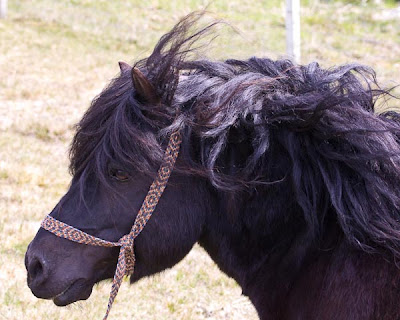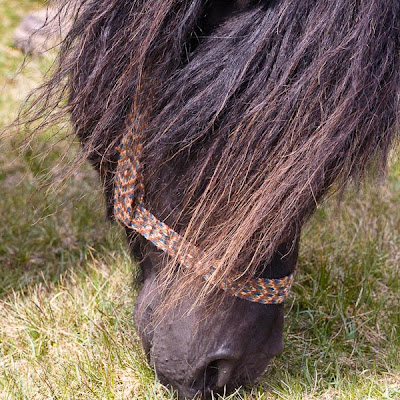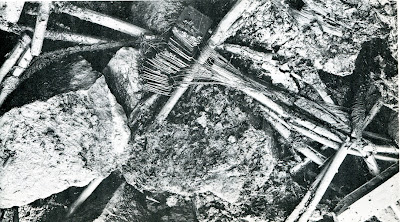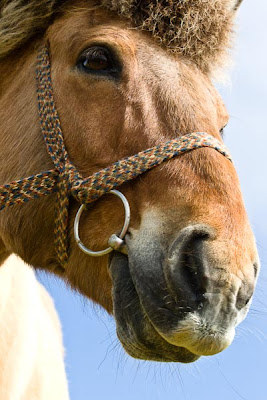The Art of Wool Grading
If you own sheep, they need to be sheared at least once and often twice a year, depending on the wool growth of the particular breed of sheep that you raise. Once shorn, you end up with big bags of fleece that need to be shirted. (Skirting is the process of removing all of the unusable wool- primarily the belly wool, the 'tags' or dirt and manure encrusted wool often from the very rear end of the sheep and the strip of wool down the center of the back that is often damaged by the weather.) Once this is done, the wool that is left needs to be graded or sorted.
| Martha Owen from the John C Campbell Folk School, North Carolina visiting with Shetland wool grader, Oliver Henry in the Lerwick warehouse of Jamieson & Smith, Ltd |
With the older, more primitive versions of Shetland sheep you would probably find all five grades on one sheep. From an evolutionary point of view, each grade had it's purpose. The 'Super Fine' grades would be found surrounding the jugular vein areas on the neck of the animal. It's downy character would have been extrodinarily insulating in the very worst of weather!
Wool classified as 'Rough' would most likely be found on the britch or hind quarters of a sheep. On an island known for it's gale force winds, sheep tend to stand with their backsides facing into the wind for weather protection. This 'Rough' wool would serve as a bit of a wooly wind breaker.
| Jamieson & Smith LTD in Lerwick, Shetland |
Martha Owen had the chance to visit with Oliver Henry in the warehouse of Jamieson & Smith, Ltd in 2011. Jamieson & Smith have been in existence in one form or another since the late 1940's. Oliver came for a summer job in 1967 and never left. Oliver grades Shetland wool for Jamieson & Smith which purchases 80% of the Isles annual wool clip. The company also produces extremely high quality Shetland yarn that can only be purchased in Shetland or through the internet http://www.shetlandwoolbrokers.co.uk/
I personally understand the concept of wool grading from a visual perspective. However, when Elizabeth Johnston of Shetland came to teach in 2010 along with Martha Owen, I had the opportunity to watch her grade a local fleece. She essentially closed her eyes and placed her hand into the fleece and 'felt' the wool in her hand. From that short 'squeeze', she was able to tell what grade the wool was in that particular portion of the fleece. In much less than a minute she had graded the entire fleece. I was in awe of her abilities. It is definitely an acquired skill (which I have yet to acquire)!
Here are some links with more information about:
Jamieson & Smith
Their book - Knit Real Shetland
Shetland Wool Week





